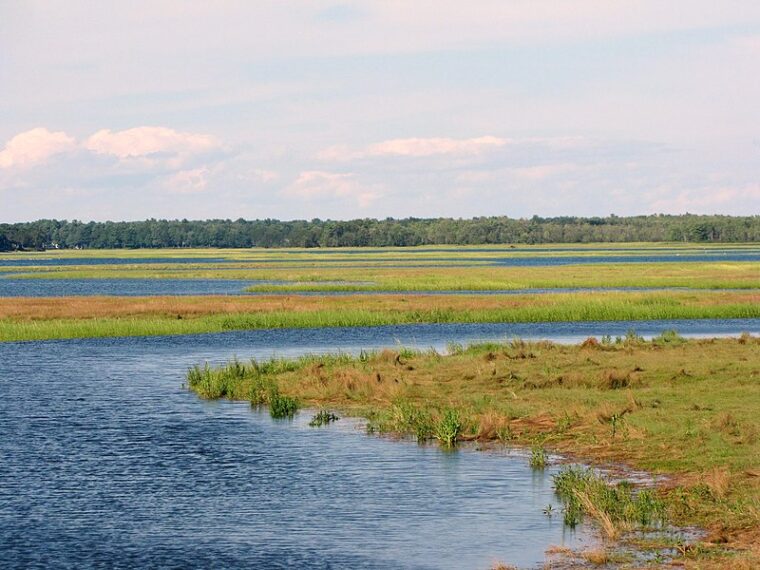
The National Oceanic and Atmospheric Administration will receive $123 million to support coastal habitat restoration projects throughout the United States. The funds come from the 2021 Infrastructure Investment and Jobs Act to create 30 coastal restoration projects that will help ecosystems thrive and that mitigate the effects of climate change.
“This significant increase in resources from NOAA will be essential in helping to build local infrastructure that is climate resilient, while providing essential benefits to businesses,” said Jainey Bavishi, assistant secretary of commerce for oceans and atmosphere and deputy NOAA administrator.
With sea levels projected to rise in the coming decades, coastal wetlands are expected to play a pivotal role in limiting damage inland. Wetland environments slow down hurricane storm surges and act as a natural sponge to soak up incoming water that could otherwise exacerbate flooding. The investment in research and restoration of these environments is part of an ongoing effort to make America’s coastlines more resilient to future climate impacts.
“America’s coastal communities are on the frontlines of climate change — and we can tap into the power of nature to reduce the impacts of sea level rise, storms and erosion,” said Arati Prabhakar, the director of the White House office of science and technology policy.
The funding will be split between three areas overseen by NOAA:
Coastal Zone Management: The program for coastal management goes back to the 1972 Coastal Zone Management Act. Projects of this type aim to increase the size and vitality of coastal wetlands, corals and natural shorelines on the oceans and the Great Lakes. $59.8 million will be devoted to 22 coastal zone management projects.
Estuary Research: Estuaries are the ecosystems that form in flatlands as rivers sprawl out on their way to the ocean and freshwater gets mixed with salty ocean water. The National Estuarine Research Reserve System includes about 30 sites engaged in research and restoration on estuary wetlands. $15 million will flow to eight estuary projects.
Planning and Development: Another $48 million in non-competitive funding will not be designated to any particular project. The investment will instead support coastal management programs and estuary research centers planning processes. The funding’s goal is to increase resilience among coastal communities for the local ecosystem and economy.
“This significant increase in resources from NOAA will be essential in helping to build local infrastructure that is climate resilient, while providing essential benefits to businesses,” Bavishi said.
Two coastal zone management programs in California will receive $6 million each. One program focuses on trout habitat in the Elk River hydrologic system near the coastal city of Eureka. The project aims to restore areas that have degraded from decades of excessive logging. Benefits include improved water quality and reduced flooding risk for rural communities.
In the central coast region, the California State Coastal Conservancy will receive the other $6 million to restore parts of the Carmel River. The project aims to reconnect the river with its historic floodplain, which can expand the habitats of native species of flora and fauna, including threatened steelhead fish.
The project at the Scarborough Marsh in Maine will receive $1.4 million. That funding will support numerous conservation and restoration efforts in addition to improving public access points.
The largest estuary research project to get funded through the NOAA program is in Alabama. The $3.5 million will flow to the Alabama Department of Conservation and Natural Resources estuary reserve at Weeks Bay, southeast of Mobile. The project will remove degraded structures from the coast while restoring a portion of the estuary. The project also includes education and workforce development estuary ecosystem management.
Photo by AlanBuncher
The post NOAA funding projects to shore up coastal habitats appeared first on Government Market News.
